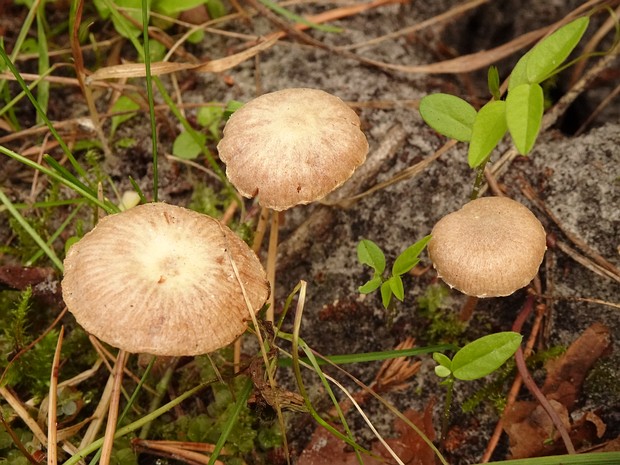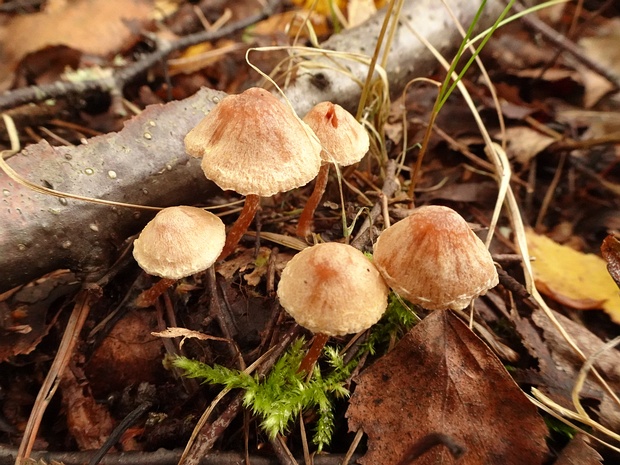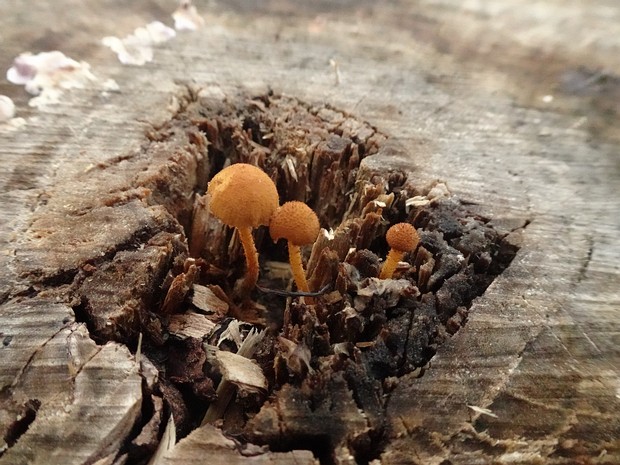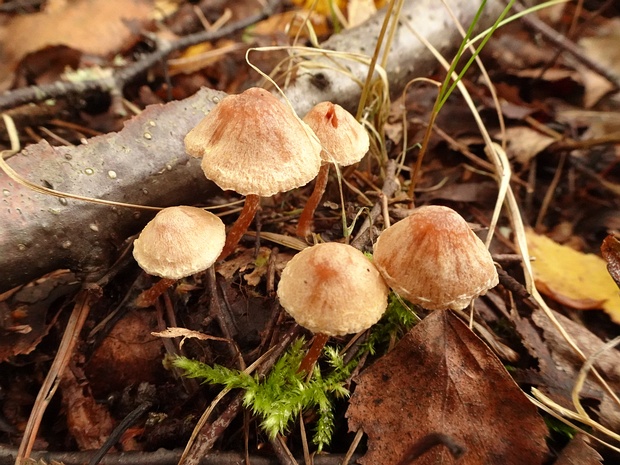Tubariaceae - Тубариевые - Tubaria Family - Tubaria-Familie 9/4/22—9/14/23
The Tubariaceae family is a group of fungi within the order Agaricales. These fungi are characterized by their small to medium-sized fruiting bodies and preference for growing on decaying wood, leaves, or other organic material.
The fruiting bodies of Tubariaceae fungi are typically brown to reddish-brown in color and possess a convex to flat cap with a smooth or slightly fibrillose surface. The gills are adnate to adnexed, and the stipe is often slender and fragile.
Tubariaceae species generally produce brown spore prints, with spores that are elliptical or almond-shaped and smooth to slightly roughened. The presence of clamp connections in the hyphae is another common characteristic of this family.
The Tubariaceae family is primarily saprotrophic, meaning they decompose dead plant material and contribute to nutrient recycling in their ecosystems.
This family is not well-studied, and the exact number of species is not well-established. However, the genus Tubaria is the most well-known and representative genus of the family.
Tubaria furfuracea, also known as the Scurfy Twiglet, is a common and widespread species within the Tubariaceae family. It is found in Europe and North America, often growing in clusters on decaying wood or other organic material.
Another representative species is Tubaria conspersa, which is characterized by its small size and reddish-brown cap. It is also found in Europe and North America, frequently growing on decaying leaves and twigs.
Tubariaceae fungi are often overlooked due to their small size and inconspicuous nature. They are not considered to be of significant culinary or medicinal value.
The habitat of Tubariaceae species varies but is often associated with woodland environments or areas with an abundance of decaying organic matter.
The distribution of the Tubariaceae family is widespread, with species found across Europe, North America, and other parts of the world.
While the Tubariaceae family is not well-known, it plays an important ecological role in the decomposition of organic material and the recycling of nutrients within ecosystems.
As a group, the Tubariaceae family is not considered to be of significant conservation concern. However, individual species may be affected by habitat loss and other environmental factors.




